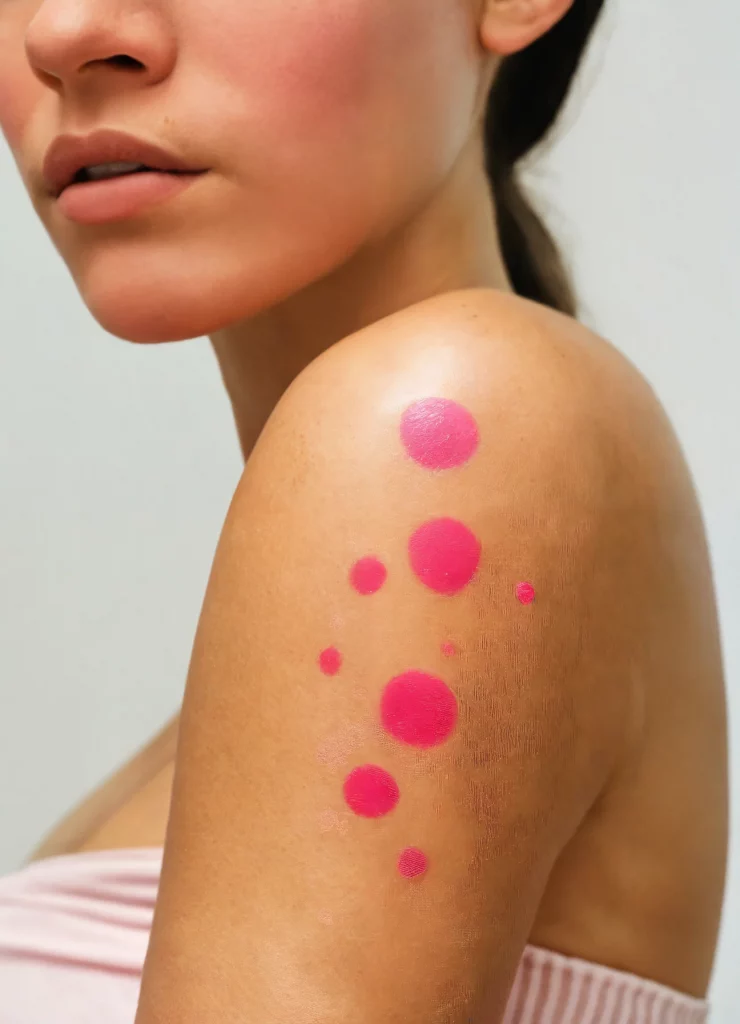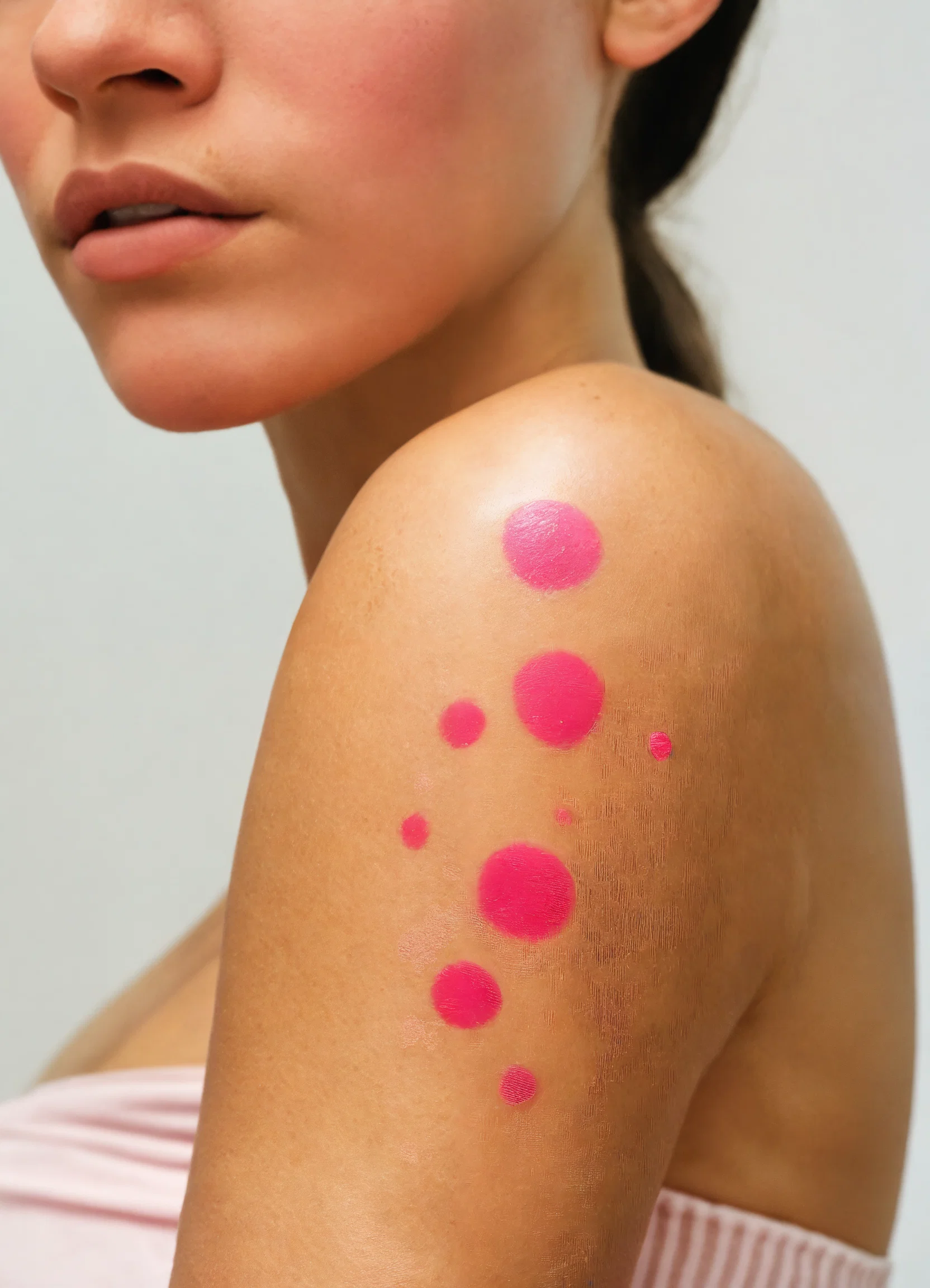Even if we avoid all potential allergens in cosmetics, there’s always a chance of an individual reaction, where an ostensibly harmless cream like CeraVe might cause redness or burning. For such cases, dermatologists recommend performing patch tests.

In medicine, patch tests are used to identify which components cause contact dermatitis reactions. Pieces of cloth with the tested component are placed on the skin (usually the back) and secured with hypoallergenic tape. If multiple substances are tested, each patch is numbered. After 2-4 days, the patches are removed to check for allergic reactions. This method is used to test hair dyes, active ingredients, fragrances, and sunscreen components.
How to Perform a Patch Test at Home
- Select an Area: Choose an area on your body such as the abdomen, forearm, back, or the part of your body where you plan to use the product (for face products, the lower jawline, neck, or inner elbow are good choices).
- Apply the Product: Apply a small amount of the new cosmetic product to the selected area.
- Wait: Leave the product on for 24-48 hours.
- Observe: After the waiting period, check the area for any signs of a reaction. Look for specific symptoms like redness (erythema), severe itching, or blistering.
- Evaluate: If you notice any adverse reactions during or after the test, do not use the product.
By following these steps, you can minimize the risk of experiencing adverse reactions and ensure that your skin tolerates the new product.


Leave a Reply